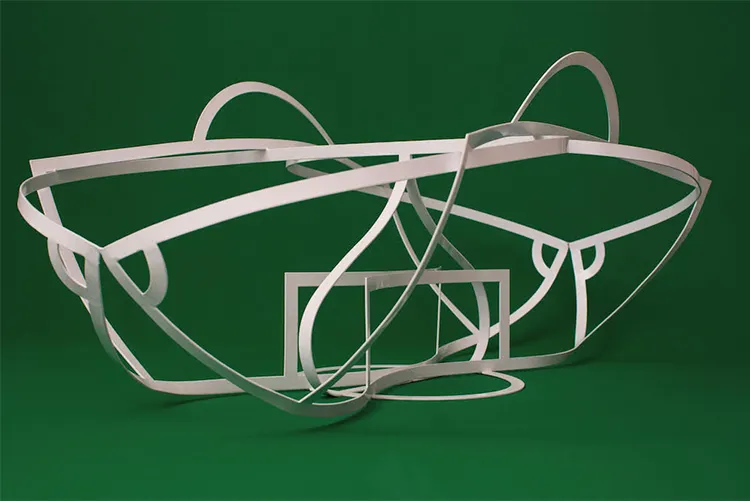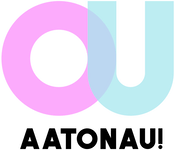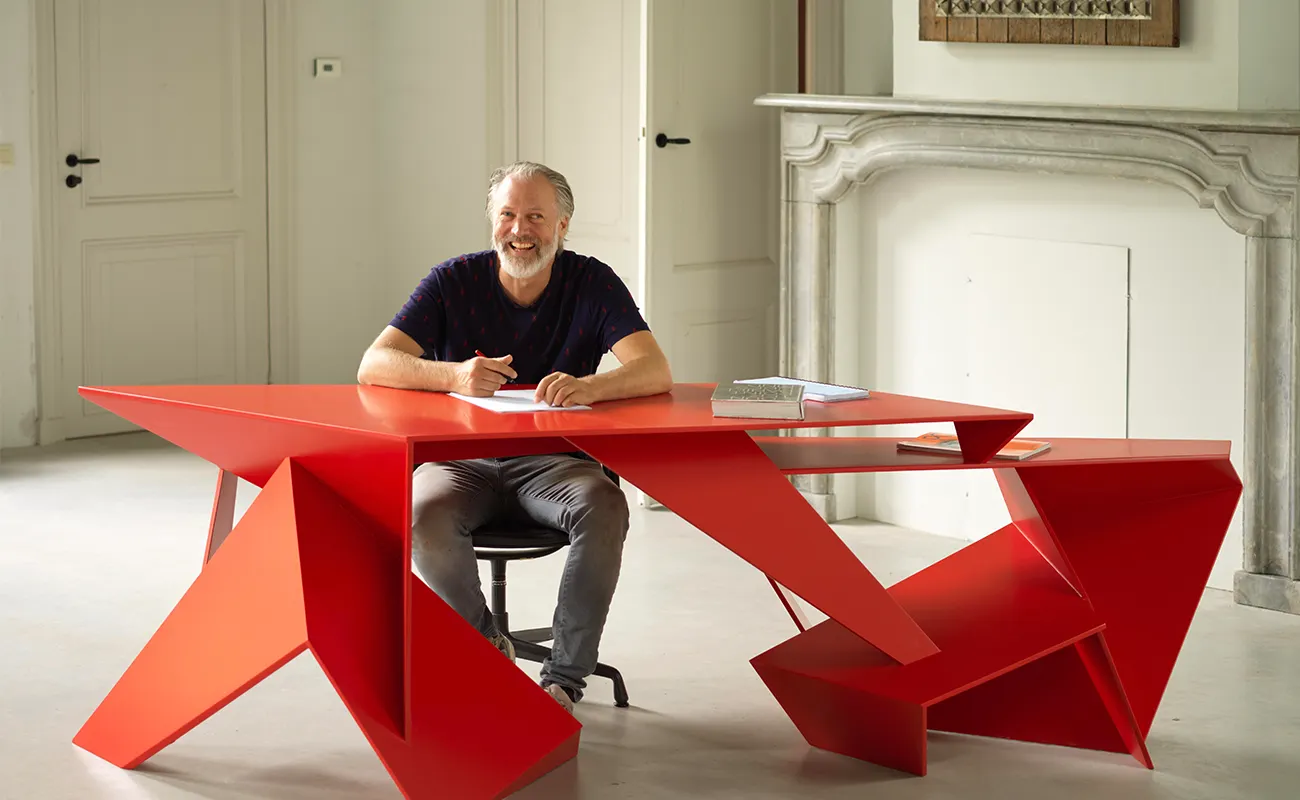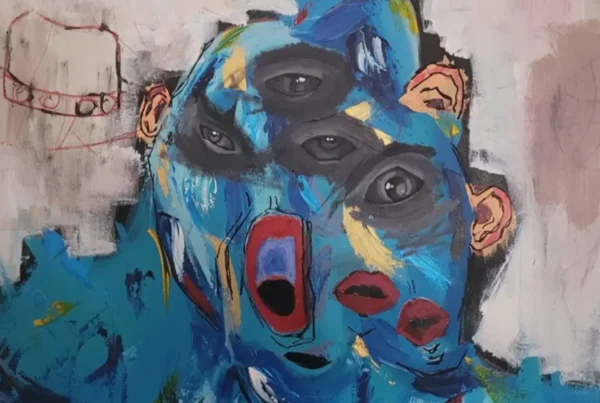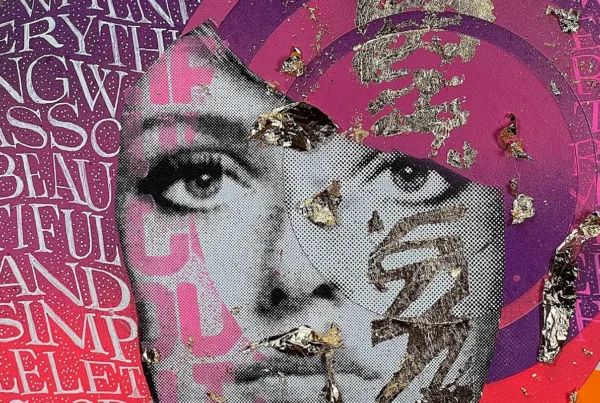“The most important aspect is not the finished object, but the transition from one dimension to another.”
The Transformation of Surfaces into Motion
Bruno van Hooijdonk, known professionally as Buro Bruno, has been crafting thought-provoking artistic objects since 1998. His creative philosophy revolves around movement—not just physical movement in space but the deeper transformation of one dimension into another. His work frequently begins with a flat surface, which he manipulates into three-dimensional structures, emphasizing the transition itself rather than just the final form. For him, the essence of his art lies in capturing the act of change, making the viewer acutely aware of the process rather than just the result.
In recent years, Bruno’s focus has shifted from the transition between two and three dimensions to the exploration of the fourth dimension. This evolution in his work has led him to experiment with three-dimensional starting points rather than flat surfaces, pushing his art further into the realm of time and perception. His latest projects, such as OfficeDesk 7920, the photographic series Time is a Construct, and the 3D-printed collection Feints, reflect this ongoing exploration. These works embody his continuous pursuit of visualizing change, offering glimpses into a reality that is constantly shifting and evolving.
This fascination with movement and transformation gives his work an almost kinetic quality, even when the objects themselves remain physically static. Every fold, curve, and shadow in his designs is a remnant of the forces that shaped them. By emphasizing the process over the finished product, Bruno challenges conventional notions of form and permanence, encouraging viewers to see art not as a fixed object but as a dynamic event unfolding over time.
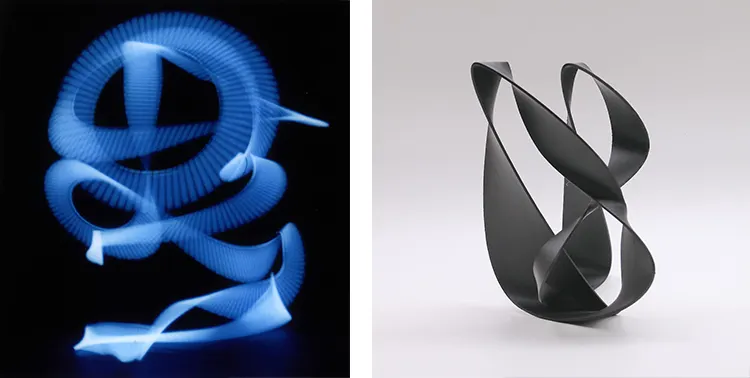
Buro Bruno: An Inner Drive Turned Artistic Expression
For Bruno, art was never simply a career choice or a pursuit of external inspiration—it was an intrinsic force, an unstoppable energy that demanded to be expressed. Long before he formalized his artistic practice, he felt a constant creative urge, a drive that manifested in movement, form, and transformation. This deep-seated impulse eventually found structure during his studies at ARTEZ University in Arnhem, Netherlands, where he began to refine his ability to channel this energy into tangible artistic creations.
His artistic development took a spiritual turn as he sought to give shape to his dynamic inner world. Rather than conceptualizing a work in advance and then executing it, he preferred to bring ideas to life through spontaneous, immediate action. This approach led to some of his most compelling early pieces, such as a flowing, multifunctional furniture design, the neon sculpture A Thin Red Line, and Ins Blaue Hinein, a series of photographs capturing the movement of light sources in darkness. The latter was an experiment in “drawing” full-scale objects into space, a precursor to his later explorations of dimension and perception.
Another striking example is a full-scale car he built by hand—fully functional and drivable. The work captures a moment just beyond control, representing what happens when speed overtakes intention and one becomes subject to forces larger than the self. It’s a literal embodiment of Bruno’s fascination with motion, risk, and the fragile boundary between mastery and surrender.
What distinguishes Bruno’s work is this raw immediacy—the absence of premeditation allows his pieces to emerge as organic manifestations of energy and motion. This unfiltered process results in works that feel alive, as though they are still in the midst of transformation. By embracing spontaneity and rejecting rigid structures, Bruno continues to explore the boundaries of artistic creation, always searching for new ways to translate his internal force into the external world.
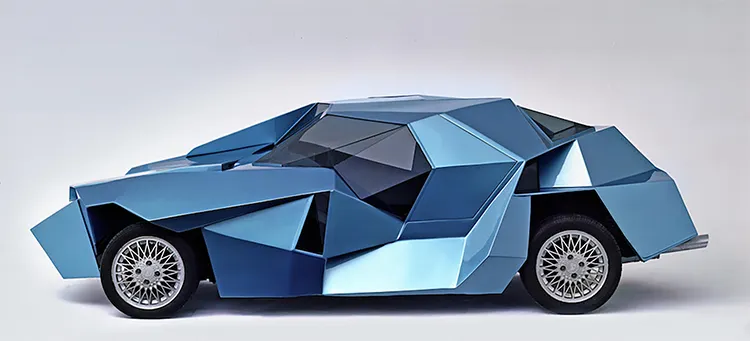
Exploring the Fourth Dimension Through Art
Bruno’s artistic style is defined by motion and transformation, but in recent years, his work has been increasingly shaped by his interest in the nature of reality itself. His exploration of the fourth dimension has led him to study complex topics such as quantum mechanics, black holes, and the nature of perception. Philosophical works like The Case Against Reality by Donald Hoffman and The Idea of the World by Bernardo Kastrup have influenced his thinking, reinforcing his belief that reality is far more fluid than it appears.
This intellectual curiosity feeds directly into his art, which often seeks to depict forms that transcend conventional three-dimensional structures. His recent works blur the boundaries between physical space and conceptual abstraction, creating objects that seem to defy the limitations of tangible reality. Whether through photography, sculptural design, or digital fabrication, Bruno continuously experiments with ways to visually express the imperceptible dimensions of existence.
His evolving approach challenges traditional perspectives on materiality. By seeking to visualize the fourth dimension, his work raises questions about how we experience time and space. This thematic exploration places him within a lineage of artists and thinkers who have attempted to push beyond the constraints of the physical world, using art as a tool to glimpse the unseen and rethink what is possible.
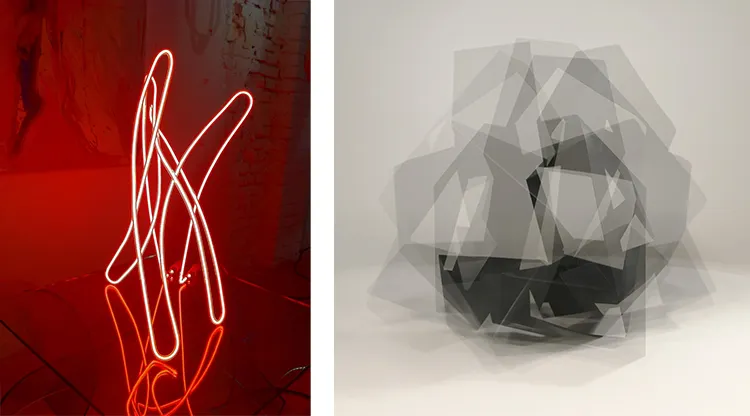
Buro Bruno: A Legacy of Light and Motion
Among Bruno’s many creations, one piece holds a particularly profound significance—his neon sculpture A Thin Red Line. Created as his final project at ARTEZ University in 1998, this work remains a defining moment in his career. It was not only a personal milestone but also a validation of his artistic vision, as it was acquired by Museum Boijmans Van Beuningen in Rotterdam. The piece encapsulates the essence of his philosophy: the seamless fusion of movement, energy, and spatial transformation.
The power of A Thin Red Line lies in its ability to embody both physical and intangible forces. The neon light flows through its three-dimensional form, creating an almost ethereal presence that shifts with the viewer’s perspective. This dynamic quality makes it feel alive, capturing the essence of Bruno’s lifelong pursuit—to make motion and transformation visible. Even decades later, he considers it his most complete and compelling work, a pure expression of his artistic identity.
This same sensitivity to space and disruption is also reflected in Bending the Rules, a sculpture in the form of a folded football pitch. By distorting a symbol of structured play and clear boundaries, Bruno invites the viewer to reconsider systems we take for granted. The piece bends not only physical space but also the expectations attached to it, echoing his broader exploration of rules—how they are followed, challenged, or reimagined.
Looking forward, Bruno envisions new ways to expand upon his past explorations. One of his most ambitious ideas is to merge his Ins Blaue Hinein photographs with his 3D-printed Feints series, creating a real-time, materialized version of his light-based drawings. This concept aims to bypass digital processes entirely, allowing him to “sketch in space” using physical materials in an immediate, unfiltered way. Such a project would be the culmination of his lifelong fascination with movement, energy, and transformation—an ever-evolving journey into the unseen dimensions of reality.
